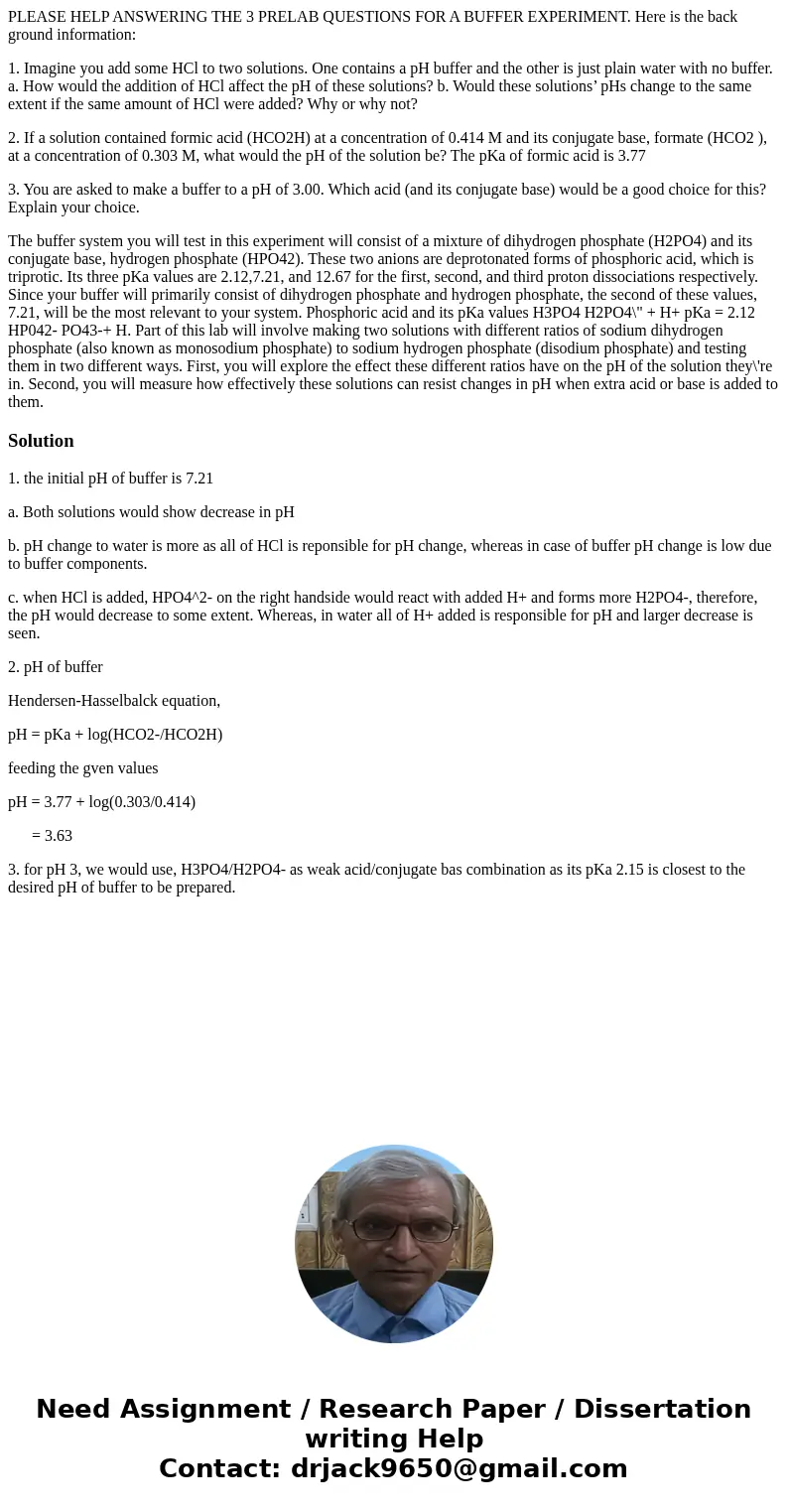PLEASE HELP ANSWERING THE 3 PRELAB QUESTIONS FOR A BUFFER EX
PLEASE HELP ANSWERING THE 3 PRELAB QUESTIONS FOR A BUFFER EXPERIMENT. Here is the back ground information:
1. Imagine you add some HCl to two solutions. One contains a pH buffer and the other is just plain water with no buffer. a. How would the addition of HCl affect the pH of these solutions? b. Would these solutions’ pHs change to the same extent if the same amount of HCl were added? Why or why not?
2. If a solution contained formic acid (HCO2H) at a concentration of 0.414 M and its conjugate base, formate (HCO2 ), at a concentration of 0.303 M, what would the pH of the solution be? The pKa of formic acid is 3.77
3. You are asked to make a buffer to a pH of 3.00. Which acid (and its conjugate base) would be a good choice for this? Explain your choice.
The buffer system you will test in this experiment will consist of a mixture of dihydrogen phosphate (H2PO4) and its conjugate base, hydrogen phosphate (HPO42). These two anions are deprotonated forms of phosphoric acid, which is triprotic. Its three pKa values are 2.12,7.21, and 12.67 for the first, second, and third proton dissociations respectively. Since your buffer will primarily consist of dihydrogen phosphate and hydrogen phosphate, the second of these values, 7.21, will be the most relevant to your system. Phosphoric acid and its pKa values H3PO4 H2PO4\" + H+ pKa = 2.12 HP042- PO43-+ H. Part of this lab will involve making two solutions with different ratios of sodium dihydrogen phosphate (also known as monosodium phosphate) to sodium hydrogen phosphate (disodium phosphate) and testing them in two different ways. First, you will explore the effect these different ratios have on the pH of the solution they\'re in. Second, you will measure how effectively these solutions can resist changes in pH when extra acid or base is added to them.Solution
1. the initial pH of buffer is 7.21
a. Both solutions would show decrease in pH
b. pH change to water is more as all of HCl is reponsible for pH change, whereas in case of buffer pH change is low due to buffer components.
c. when HCl is added, HPO4^2- on the right handside would react with added H+ and forms more H2PO4-, therefore, the pH would decrease to some extent. Whereas, in water all of H+ added is responsible for pH and larger decrease is seen.
2. pH of buffer
Hendersen-Hasselbalck equation,
pH = pKa + log(HCO2-/HCO2H)
feeding the gven values
pH = 3.77 + log(0.303/0.414)
= 3.63
3. for pH 3, we would use, H3PO4/H2PO4- as weak acid/conjugate bas combination as its pKa 2.15 is closest to the desired pH of buffer to be prepared.

 Homework Sourse
Homework Sourse